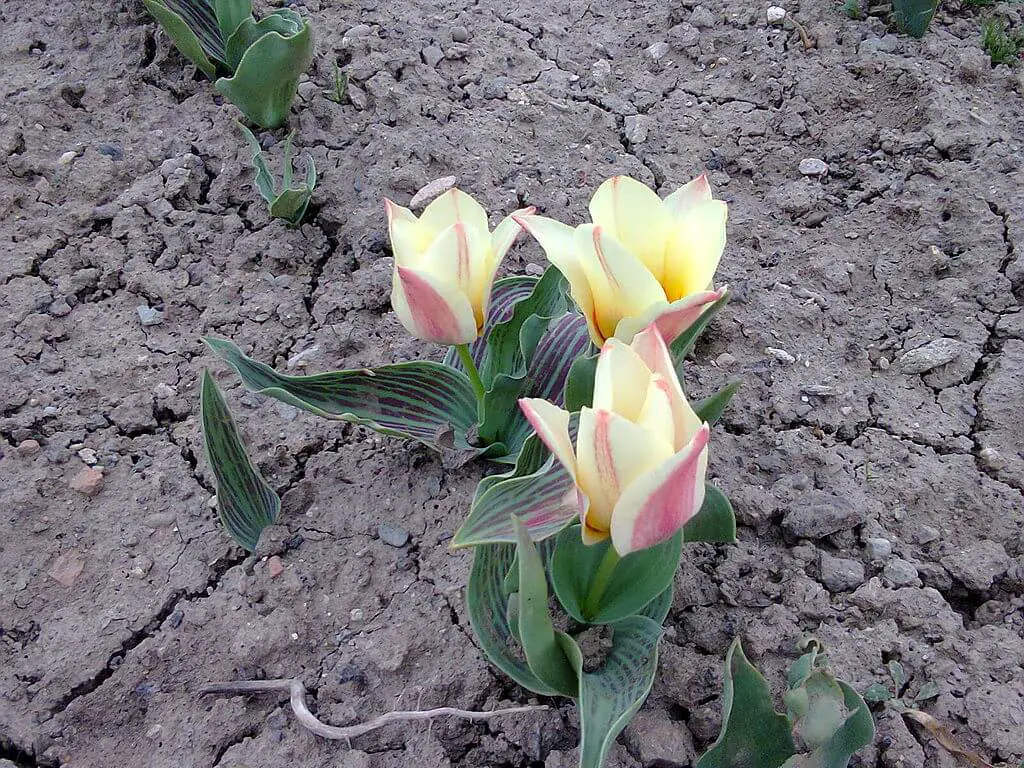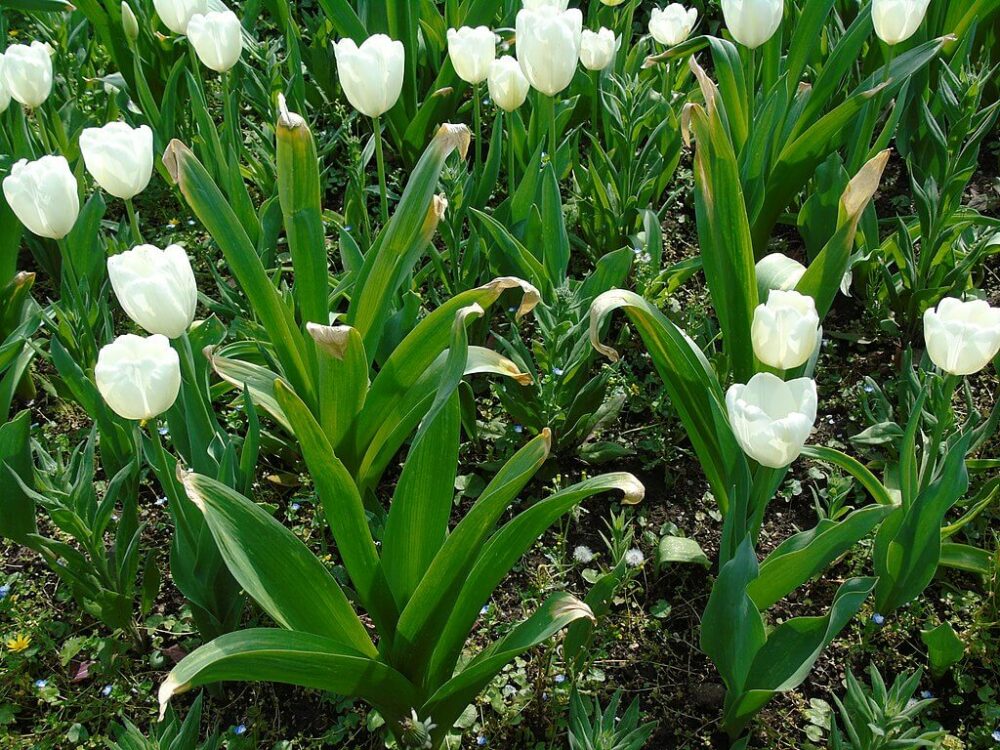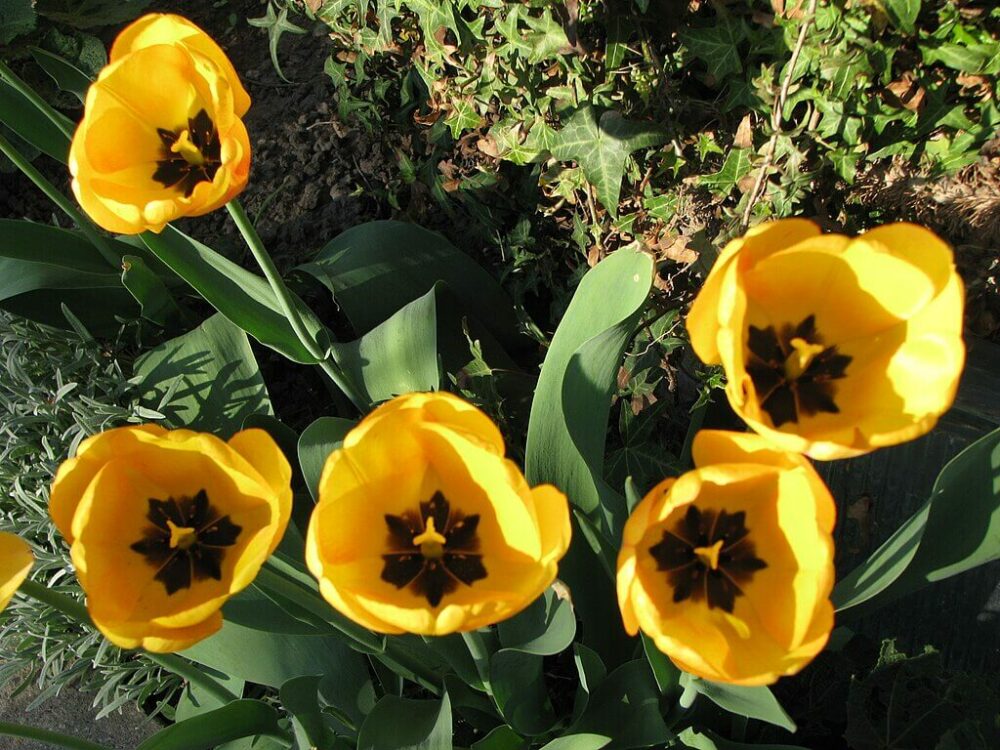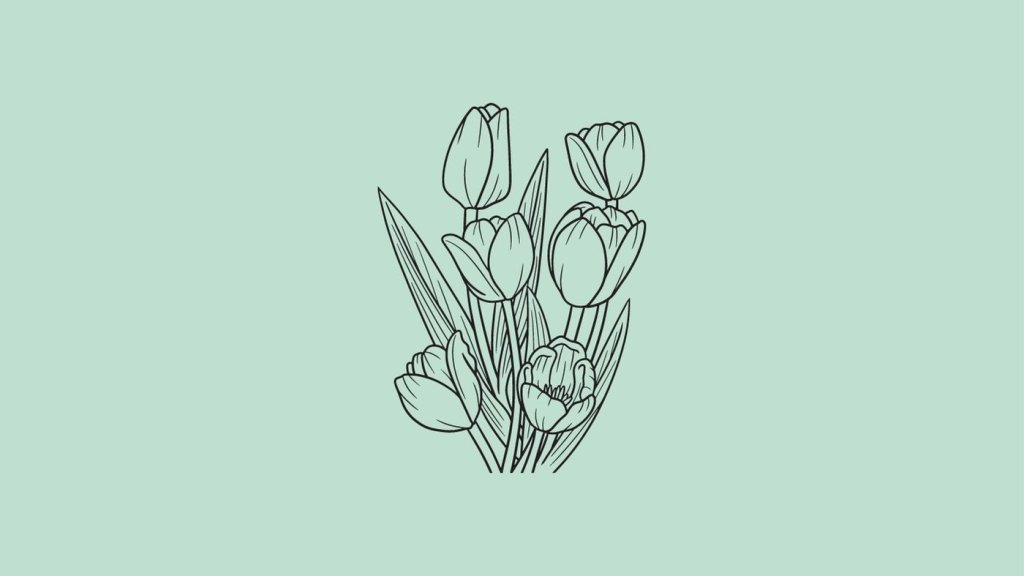Tulipa gesneriana, commonly known as the Gesneriana tulip or garden tulip, is a species of flowering plant belonging to the family Liliaceae (lily family). It is native to the region of the Caucasus and Eastern Turkey but has been widely cultivated and hybridized in North America to produce various ornamental tulip varieties.
Tulipa gesneriana is a popular and beloved flower in the spring garden. Its bright and cheerful blooms make it a favorite choice for gardeners and floral enthusiasts alike.
Whether in formal flower beds or naturalized settings, these ornamental plants bring a burst of color and beauty to the landscape.
What are the characteristics of Tulipa gesneriana?
Flowers:
What Are You Foraging For Right Now?
We're thrilled to hear your ideas. What would you like to submit today? Feel free to share your thoughts and experiences with us.
- The flowers of Tulipa gesneriana are large, typically measuring around 4 to 6 inches (10 to 15 centimeters) in diameter.
- The flowers are cup-shaped, resembling a goblet or chalice. The petals are broad and slightly reflexed, creating an open and inviting appearance.
- The colors of the flowers are incredibly diverse, ranging from red, yellow, orange, pink, and purple to bi-colored varieties with combinations of these colors.
Leaves:
- The leaves of Tulipa gesneriana are long, narrow, and typically gray-green in color.
- The leaves grow from the base of the stem and provide an attractive backdrop for the vibrant flowers.
Stems:
- The flower stems are relatively tall, typically reaching a height of 18 to 24 inches (45 to 60 centimeters). Some cultivars might be slightly taller or shorter.
- Each stem bears a single large flower at the top.
Bulbs:
- Tulipa gesneriana grows from bulbs, which are planted in the fall for spring blooming.
- The bulbs are generally round in shape and covered with a papery outer layer.
Habitat and Cultivation:
- These tulips are widely cultivated and appreciated for their ornamental value. They are commonly grown in gardens, parks, and landscapes to provide vibrant color in the spring.
Cultivars:
- There is a wide range of cultivars of Tulipa gesneriana, each with its unique characteristics. Cultivars vary in terms of flower color, size, shape, and petal arrangement. Some popular Tulipa gesneriana cultivars include queen of the night, red emperor, princess Irene, apricot beauty, Shirley, yellow mountains, super parrot.
Spring Bloom:
- Tulipa gesneriana is known for its spring blooming period, typically occurring in April or May, depending on the local climate.
Symbolism:
- Tulips, including Tulipa gesneriana, are often associated with spring, renewal, and love. Different colors of tulips can also carry specific meanings.


What color is a Tulipa Gesneriana?
The flowers of this tulip species can be found in various vibrant and striking hues. Some of the common colors include:
- Red: Many varieties of Tulipa gesneriana feature bright red flowers that can range from deep, rich red to lighter shades.
- Yellow: Yellow is another common color for Gesneriana tulips, with shades that vary from pale buttery yellow to vibrant golden yellow.
- Orange: Orange Gesneriana tulips can exhibit shades from soft apricot to deep, intense orange.
- Pink: Pink varieties range from pale blush pink to vivid hot pink, offering a diverse spectrum of pink shades.
- Bi-Colored: Some Gesneriana tulips feature interesting bi-colored or multi-colored petals, with combinations like red and yellow, pink and white, or other unique combinations.
- Purple and Violet: While less common, there are also varieties that display purple or violet hues.
- White: White Gesneriana tulips have pure white petals and can create a lovely contrast in the garden.
- Mixed: There are also mixed cultivars that showcase a blend of several colors in a single flower.




What is the average height of a Tulipa Gesneriana?
The average height of Tulipa gesneriana can vary based on the specific cultivar and growing conditions.
However, these tulips generally have a height range of about 18 to 24 inches (45 to 60 centimeters). Some varieties might grow slightly taller or shorter within this range.
Is Tulipa Gesneriana Edible?
Tulipa gesneriana is generally not considered edible. The bulbs and flowers of Tulipa gesneriana contain compounds that can be toxic if ingested in significant amounts.
While some tulip species have been used in traditional cuisines or for medicinal purposes in the past, it’s important to note that the majority of garden tulips, including Tulipa gesneriana, are grown primarily for ornamental purposes and are not intended for consumption.
If you’re interested in using flowers in culinary preparations, it’s safer to explore other edible flowers that are known to be safe for consumption:
Is Tulipa Gesneriana perennial?
Tulipa gesneriana is typically considered a perennial plant. However, its longevity as a perennial can vary depending on factors such as growing conditions, climate, and care.
With proper care, Tulipa gesneriana bulbs can continue to bloom for several years.
How Do You Care For A Tulipa Gesneriana?
USDA Hardiness Zones:
- Tulipa gesneriana is typically hardy in USDA hardiness zones 3 to 8.
Planting:
- Choose a well-draining location with full sun to partial sunlight for planting your tulip bulbs.
- Plant the bulbs in the fall, ideally a few weeks before the first frost. This gives them time to establish roots before winter.
Soil Preparation:
- Prepare the soil by adding organic matter like compost to improve drainage and fertility.
- Avoid planting in areas with poor drainage, as waterlogged soil can lead to bulb rot.
Planting Depth:
- Plant the bulbs at a depth of about 6 to 8 inches (15 to 20 centimeters), measuring from the base of the bulb to the soil surface.
Spacing:
- Space the bulbs about 4 to 6 inches (10 to 15 centimeters) apart to allow for healthy growth and air circulation.
Watering:
- Water the bulbs after planting to help settle the soil around them.
- In regions with regular fall and winter rainfall, additional watering might not be necessary. However, if your area experiences dry periods, provide supplemental water to keep the soil slightly moist.
Mulching:
- Apply a layer of mulch, such as straw or wood chips, to help regulate soil temperature, retain moisture, and suppress weed growth.
After Blooming:
- Allow the tulip flowers to fully bloom and then fade naturally. Do not remove the foliage or cut it back prematurely.
- The leaves continue to photosynthesize and provide energy to the bulb. Let them wither and turn yellow before removing.
Dividing and Replanting:
- Every few years, consider lifting and dividing crowded clumps of bulbs. Replant the individual bulbs at the appropriate depth and spacing.
Pest and Disease Management:
- Keep an eye out for common bulb pests and diseases, such as aphids, slugs, and bulb rot. Take appropriate measures to manage these issues if they arise.
Does Tulipa Gesneriana Grow In The Wild?
Tulipa gesneriana is not typically found growing in the wild as a native species. Instead, it is a cultivated species that has been extensively bred and hybridized for ornamental purposes.
What is the difference between a tulip and a Tulipa?
“Tulipa” is the genus name used in scientific classification, while “tulip” is the common name used to refer to these plants in everyday language.
Tulipa gesneriana Vs. Tulipa Didieri
Tulipa gesneriana and Tulipa didieri (Didier’s tulip) are two distinct species of tulips, each with its own characteristics and origins.
Native to Central Asia, particularly regions in Kazakhstan and Kyrgyzstan, Tulipa didieri is a wild tulip species. The flowers of Tulipa didieri are rich red and have narrow, delicate petals.
What does the Tulipa gesneriana flower mean?
Here are some general meanings that have been associated with the Tulipa gesneriana flower:
- Perfect Love and Declaration of Love: Tulips, in general, are often associated with expressions of love and affection. The vibrant and colorful nature of Tulipa gesneriana flowers can symbolize strong emotions, making them a popular choice for romantic gestures and declarations of love.
- Elegance and Beauty: The beauty and grace of the Tulipa gesneriana flowers can symbolize elegance and sophistication. They are often chosen to convey a sense of refinement and aesthetic appreciation.
- Celebration of Spring and Renewal: Tulips, including Tulipa gesneriana, are typically associated with the arrival of spring. Their emergence from the ground after winter’s dormancy symbolizes renewal, rebirth, and the anticipation of warmer seasons.
- Positive Changes: The act of planting and nurturing tulip bulbs, which then grow and bloom into beautiful flowers, can symbolize positive changes, growth, and transformation.
- Variety and Diversity: The wide range of colors and varieties within Tulipa gesneriana can symbolize diversity, uniqueness, and individuality.
Ana has always been interested in all things nature and flora. With her expertise in home gardening and interest in foraging, she has been spending her weekends and free time looking for edible native plants, flowers, and fungi. One of her many hobbies includes testing new savory and sweet recipes, juices or teas made from freshly picked plants, wild fruits, or mushrooms.

